Where there is a will, there is a way - Harvesting at Collyns Forest
Harriet Palmer, New Zealand Tree Grower February 2013.
After a visit to the Collyns Forest during the NZFFA Wellington conference in 2003, Benjamin Lee wrote in Tree Grower − I have been to some steep forests over the years, but none where so much has been done by so few.
So continues the story of the Collyns family and their 39 hectare block which is part plantation and part QEII covenanted. The land is long, narrow, exposed and steep with access at one end via the Paekakariki Hill road.
The early days
The family bought the land at Pauatahanui, near Porirua in 1978. The Collyns team, all of whom have devoted many hours to the forest, consist of Jeremy, his wife Indy, Jeremy’s father David who sadly recently died at age 93, and son Phillip. Gradually the family cleared gorse, then sub-divided and fenced the site. The front 9 hectares was one of the first QE II covenants to be registered, and a second similar sized covenant at the back of the property was registered not long afterwards.
The Collyns planted their first trees in 1979, and continued planting until 1998, predominantly GF17 radiata pine, but also macrocarpa and Eucalyptus regnans on selected sites. Despite the sceptics, who frequently questioned how trees could ever be harvested from such a difficult site, the Collyns persevered. All young tree maintenance and silviculture was carried out by the family in the early years, on time and to a high standard.
The first harvest
Fast forward to 2008, and the first harvesting attempt began. Chris Maher, harvesting manager at Forest Owner Marketing Services, took on the challenge of getting logs off the site and to market. Chris himself admits that Collyns Forest is one of the more challenging sites he has ever dealt with.
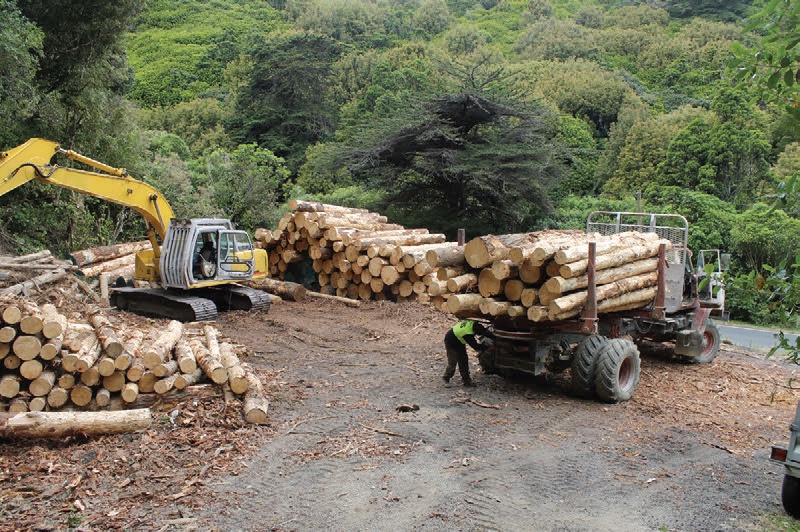
The resource consent process involved lengthy wrangling with Greater Wellington Regional Council and Porirua City Council, where urban-based planners had to get to grips with the realities of a forest harvesting operation. Concerns included the fact that loaded logging trucks were coming straight off the log storage site on to a public road.
In addition, the forest catchment drains into a stream which runs down to the Pauahatanui Inlet, a wildlife reserve. Added to this was the fact that the log storage and truck loading site had to be constructed within the covenanted area as there was nowhere else for it to go. This resulted in a site of bare minimum size, making for a tight squeeze for loaders and logging trucks. Timely removal of logs to market is vital because the storage area is so limited.
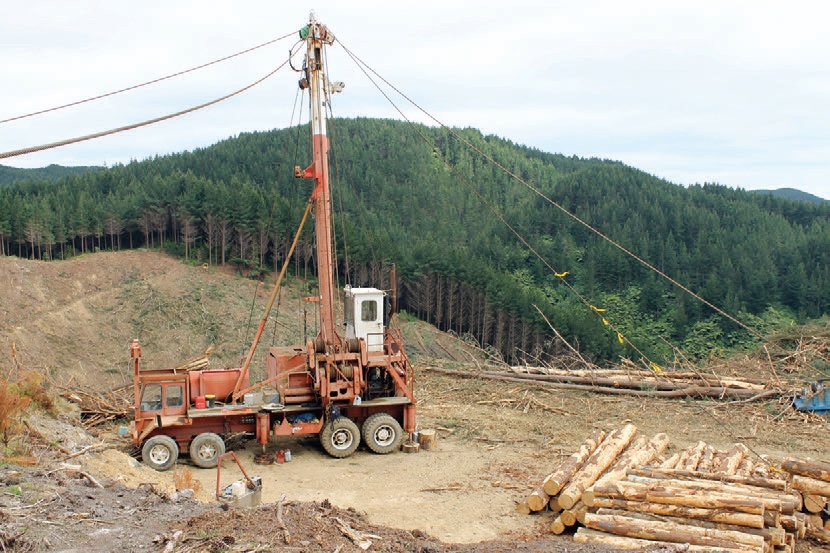
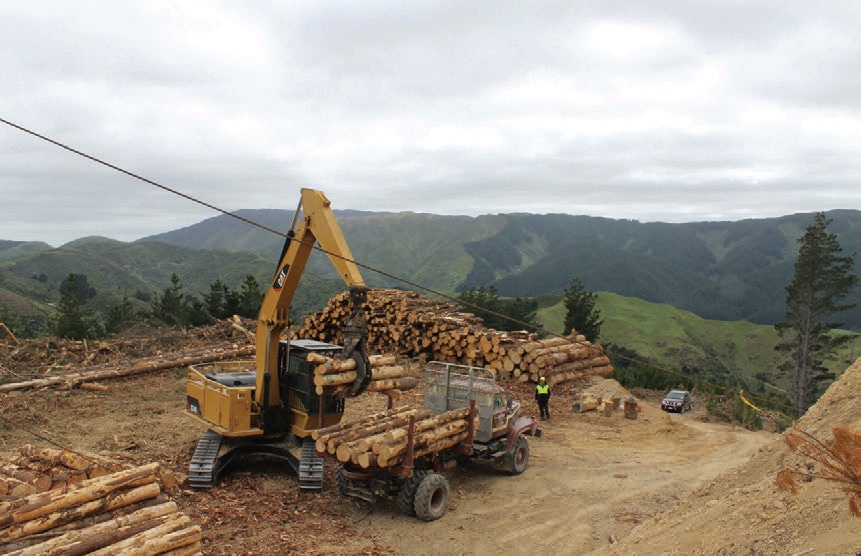
Access tracks
Another engineering challenge was to upgrade the internal access track between the plantation area and the roadside log storage site. This had to be a standard where logging machinery could be brought in and logs taken out. In some places the road has a gradient of one in three. The small scale of the harvest meant that it was not worth metalling the road, so log extraction down to the storage site was limited to dry weather only.
A small skidder-mounted cable hauler was brought on to one of the two internal skid sites, and roadline harvesting began in late 2008 and early 2009. At that time Forest Owner Marketing Services had access to a forwarder which was used successfully to bring logs down from the skid to the roadside log storage site.
Macrocarpa
The harvest included around 1.6 hectares of 29-year old macrocarpa which has had to be felled because it was losing the shelter of the neighbouring pines. The macrocarpa, which were Longwood stock, were also pruned to six metres, and thanks to the choice of a cold south-facing slope, are virtually free of canker.
The sawlogs from the expected yield of 600 tonnes have been sold to a local sawmill in Judgeford, only a few kilometres away, and are being sawn for decking and furniture markets. The rougher macrocarpa logs will be sold as firewood at around break-even price.
Financial ups and downs
For a short time things went smoothly, but then the global financial crisis hit, the export market collapsed overnight, and the harvest had to be stopped. Jeremy, somewhat disenchanted at this point, reckoned he might have made a total of $300 after costs. But at least it had been proved that log extraction to the roadside log storage site, and loading on to logging trucks, was possible.
In 2012 Chris Maher again managed to line up the harvesting ducks of the right logging crew, the right markets, and the right weather. The last experience had taught Chris that a high-cost forwarder could not be justified for such a small, stop-start operation. He went in search of a cheaper extraction vehicle and found a converted 4WD Nissan fertiliser spreader which had been operating in Southland’s beech forests. The truck has a single rear axle, dual rear wheels, is highly manoeuvrable, and can transport about 10 tonnes of logs up to six metres long.
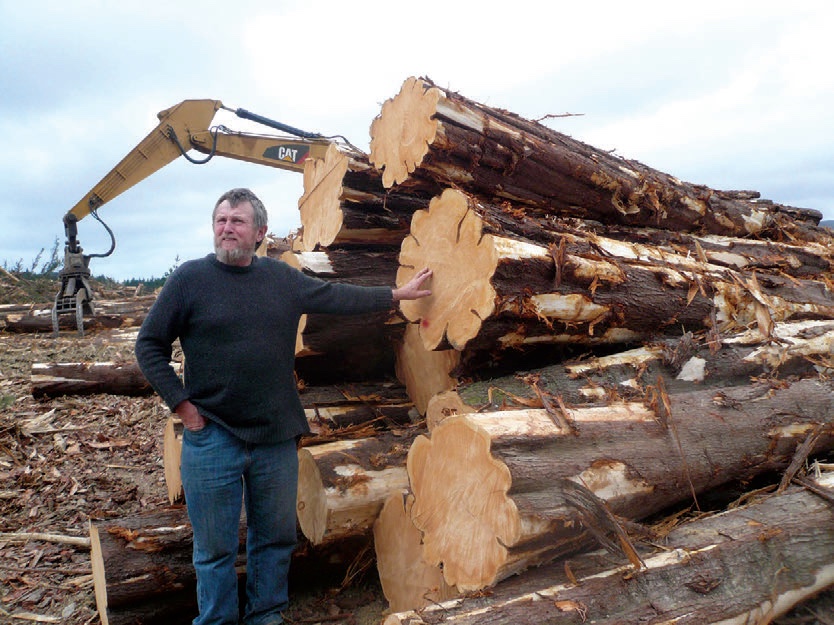
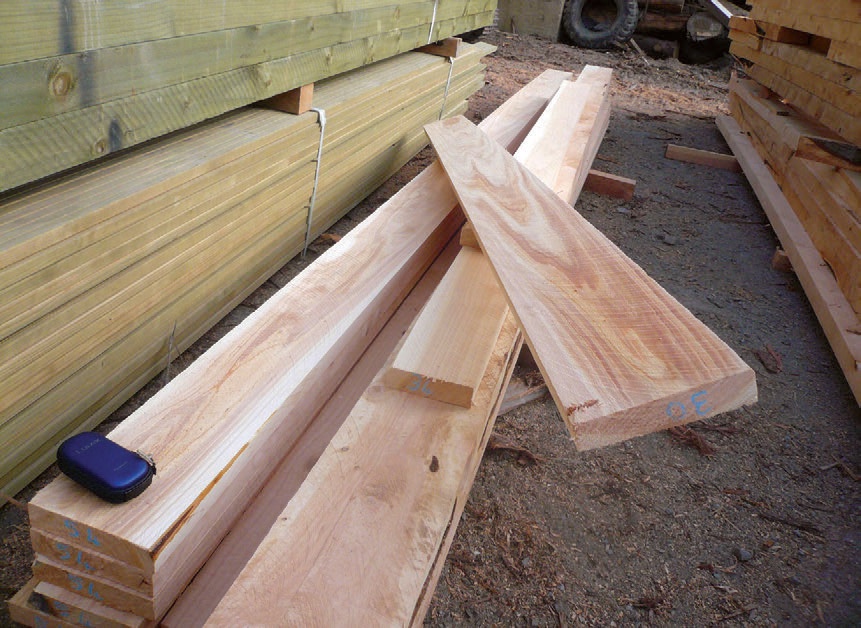
The harvest at Collyns Forest provided the stimulus for buying the truck, but it will be a useful addition to the machines deployed around harvesting jobs wherever they are best suited. There will be an ever-increasing number of small-scale woodlots coming ready for harvest over the next few years. Forest Owner Marketing Services are building up various harvesting, extraction and transport options to provide the flexibility needed to deal with what is a very variable resource. They also have machinery supply arrangements with harvesting crews, including leasing cable haulers to ease the transition from ground-based systems into cable harvesting.
More progress
The Collyns Forest harvest started up again in November 2012 in what turned out to be one of the driest springs for many years in the Wellington region. The crew of the cable-hauler has been able to make good progress, extracting about 180 tonnes a day down to the roadside log storage area. A round trip with the 4WD truck takes about 50 minutes, and the truck has proved to be ideal for the job at hand. The crew has been working long days while the weather holds.
The harvest itself is relatively straight forward, with a good deflection or lift for the cable across the slope, and good tail-holds for the hauler. The main harvest area consists of around 10 hectares of 28 to 33-year old pine, of ‘some of the best trees I have ever seen’ according to the experienced loader operator working on-site.
Chris Maher says it is nice to see an example of big trees, with very tight DOS and lots of clearwood. He anticipates a pine yield of around to 600 tonnes a hectare, thanks to the large average tree size. The harvest is expected to be completed by the end of January, assuming the weather stays dry.
Significant return
The pruned logs are going over Wellington’s Centre Port wharf to China, along with A Grade, K Grade and industrial logs. The framing grade logs are going to the Crightons mill in Levin. The short distance from the forest to CentrePort means the pruned logs are getting a significant price premium, especially compared with the option of domestic pruned mills much further away. Jeremy laments the time he has spent on stand records over the years, which appear to be of little use in the export market, unlike the domestic market, and the fact he will not get to see the sawn end product.
Jeremy’s plan, once the harvest is complete, is to repair any damaged fences and replant the site, probably just with radiata pine. He happily admits that he and the family will not be doing all the work this time, but employing a local contractor. Then a sabbatical in the UK is on the cards.
For Jeremy there are two immediate sources of satisfaction with this harvest. One is that he is able to display some of his stunning clear macrocarpa boards. The other is that he has proved the doubters and sceptics wrong, and is achieving what he always knew was possible – a significant economic return from this challenging site.
Harriet Palmer is a member of theWellington branch of the NZFFA.

 Farm Forestry New Zealand
Farm Forestry New Zealand